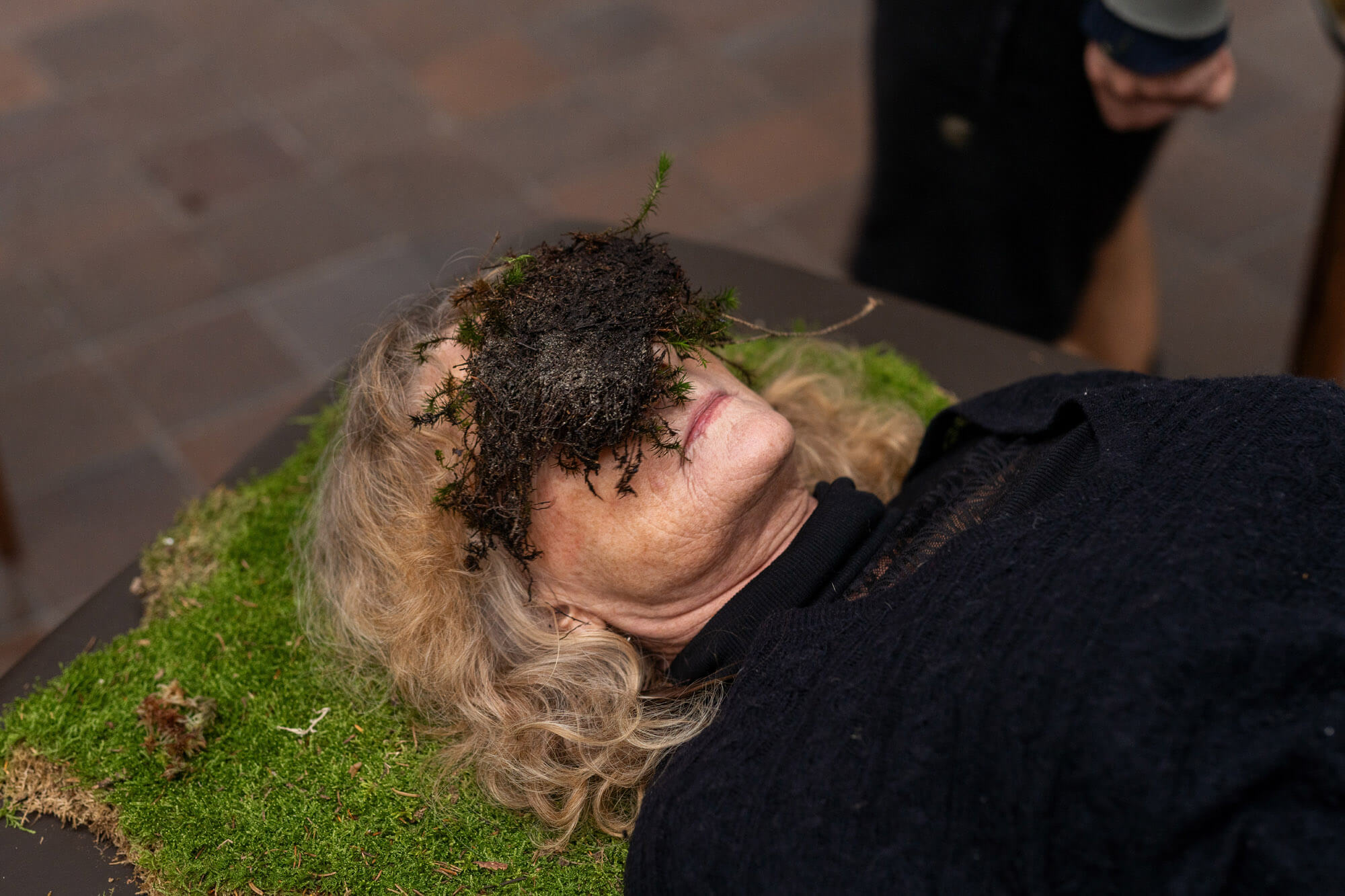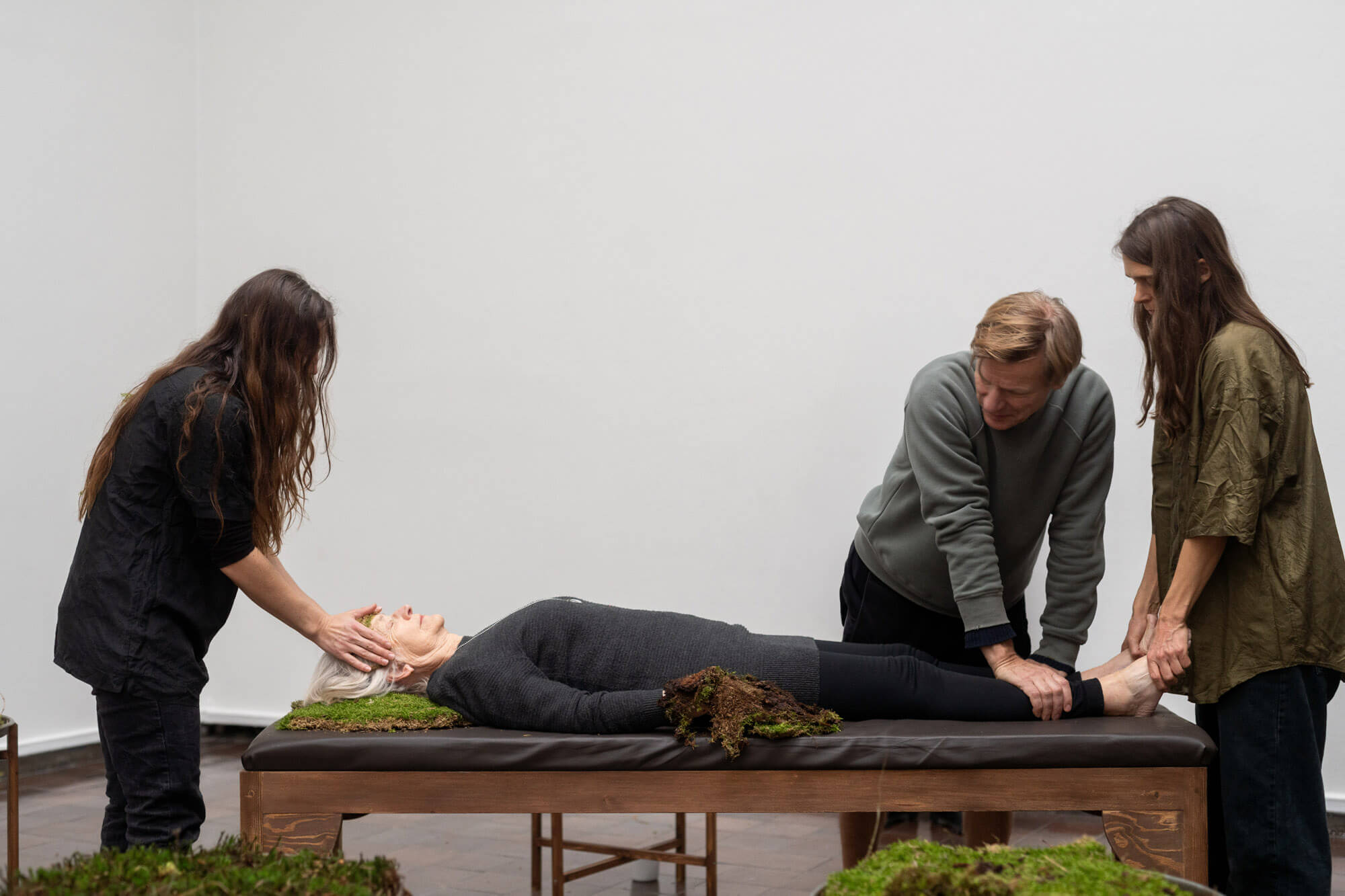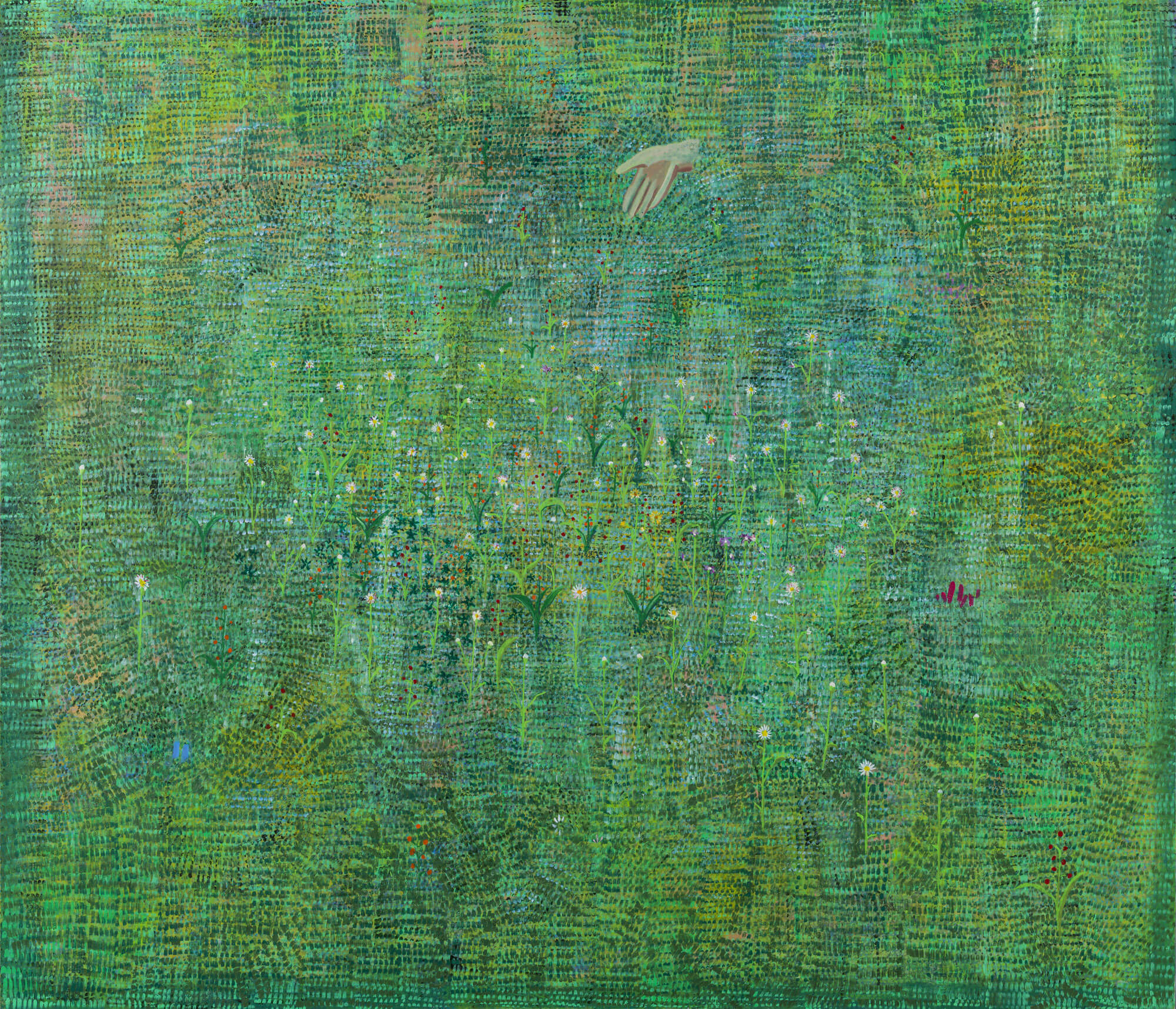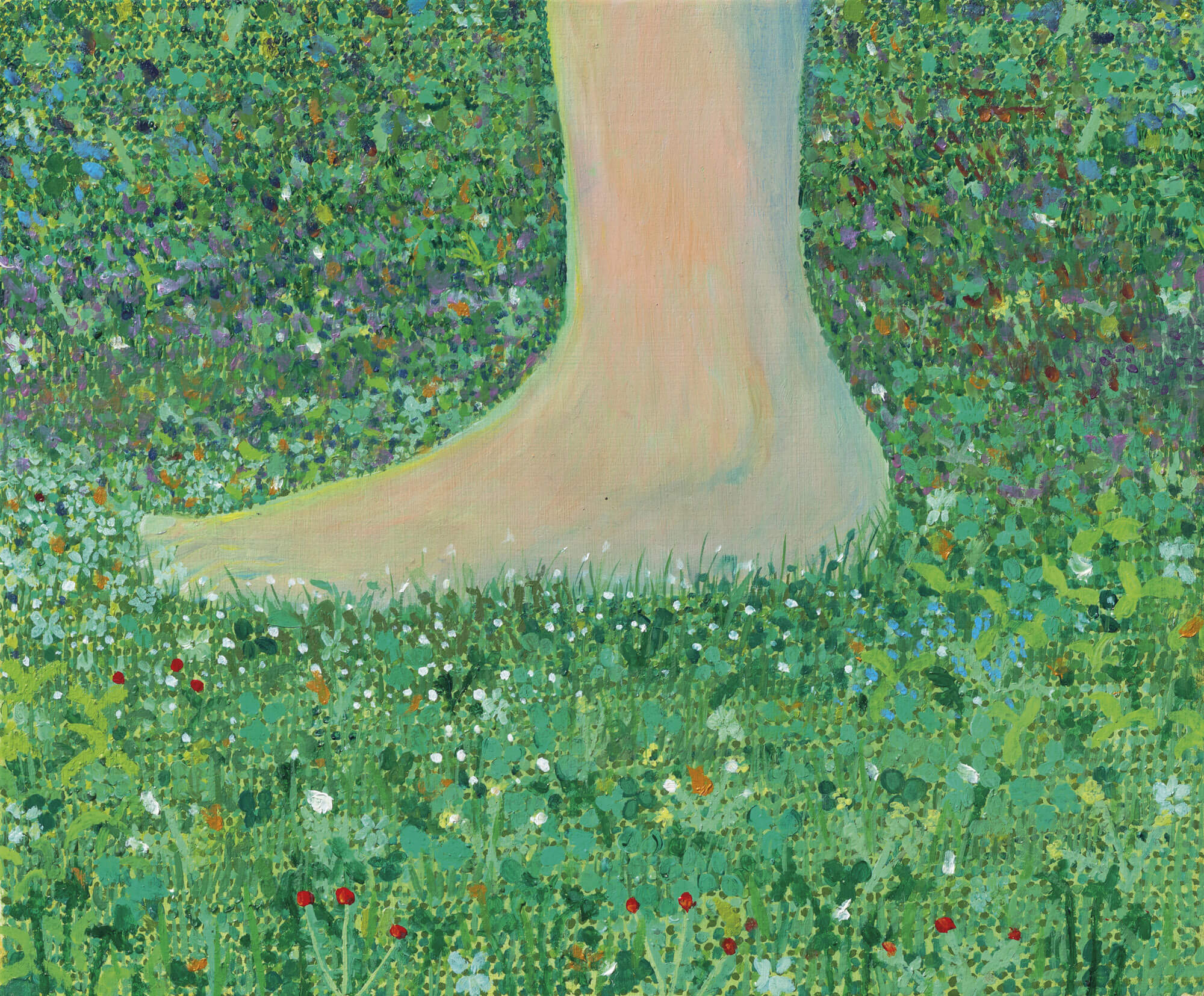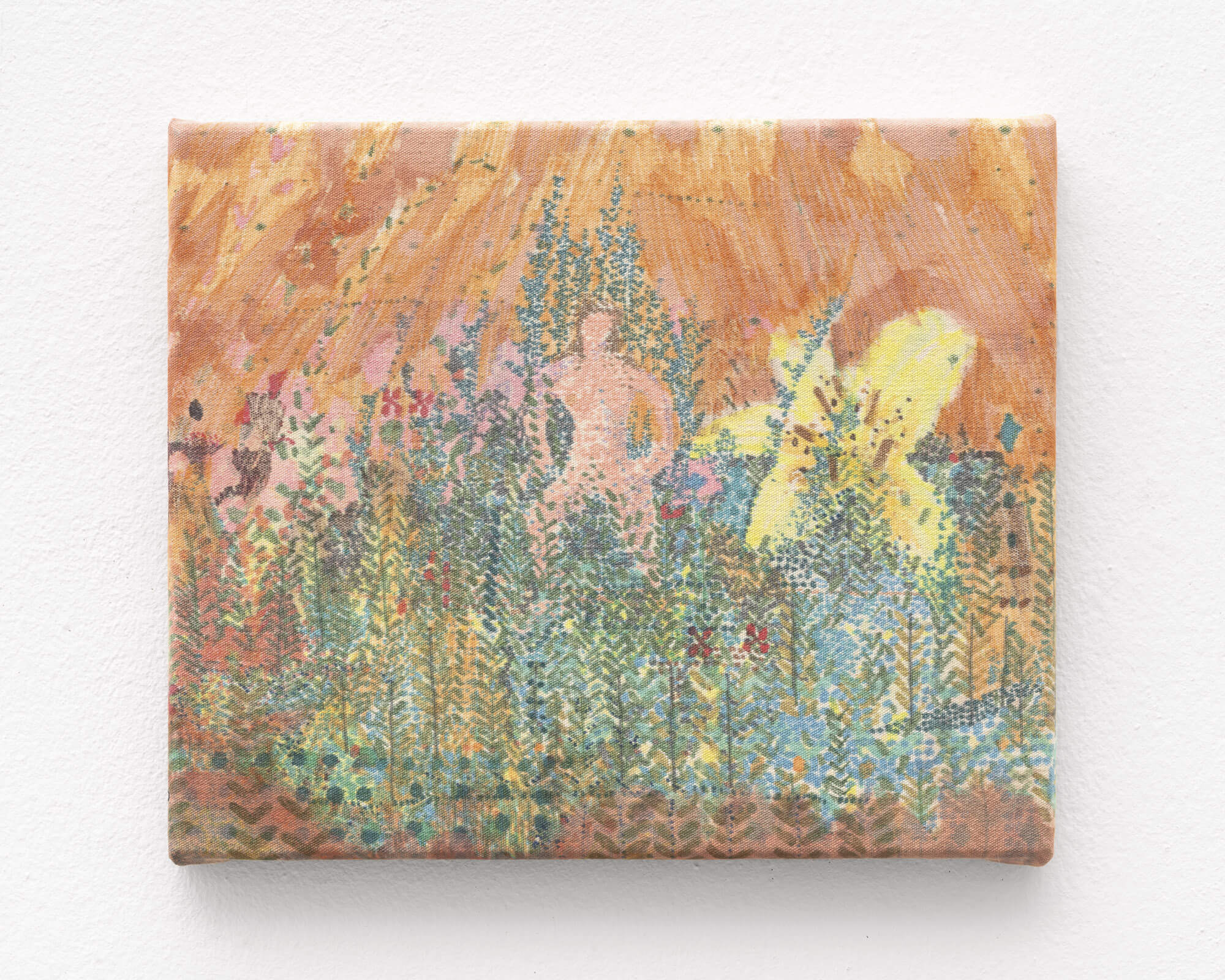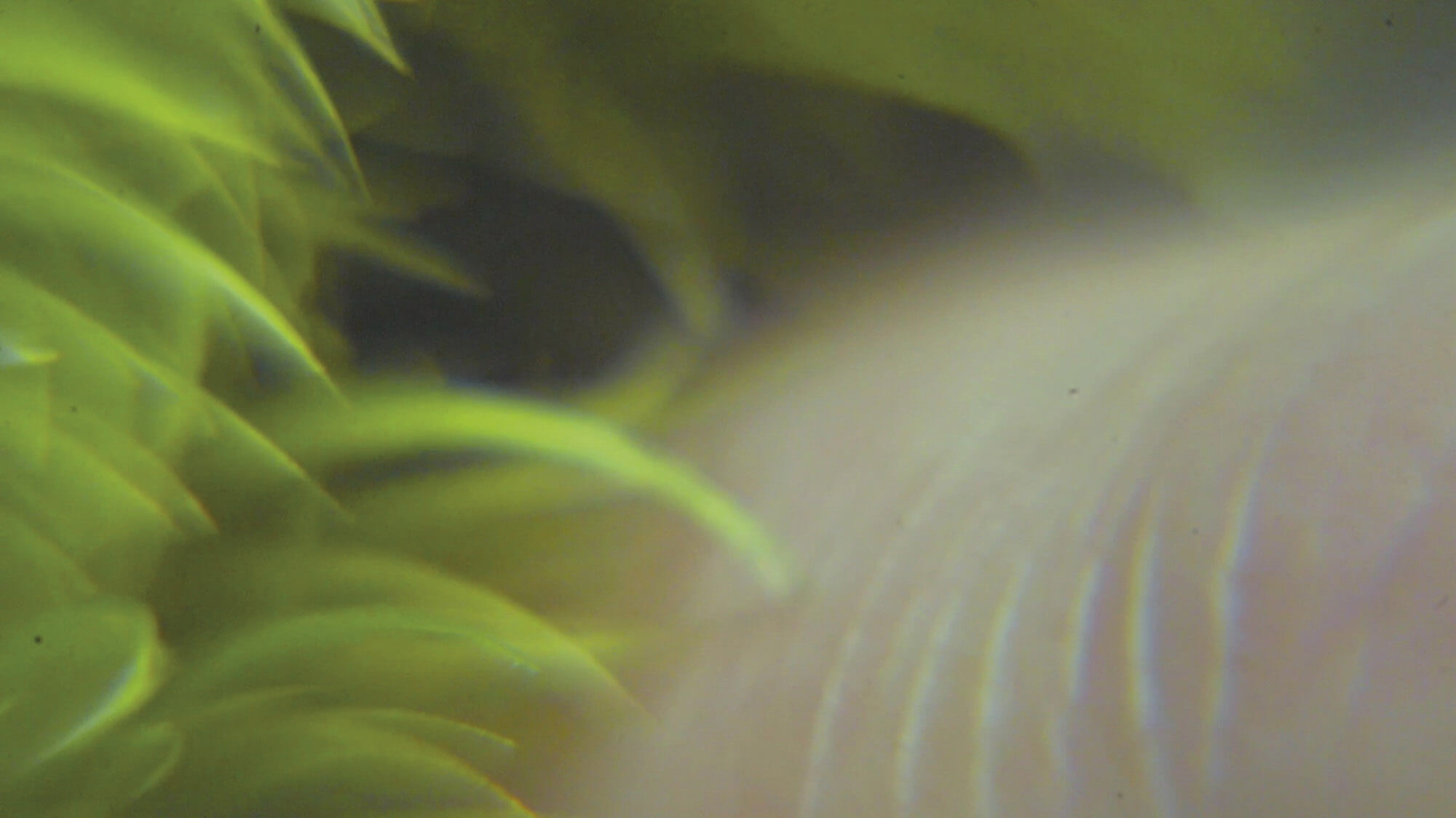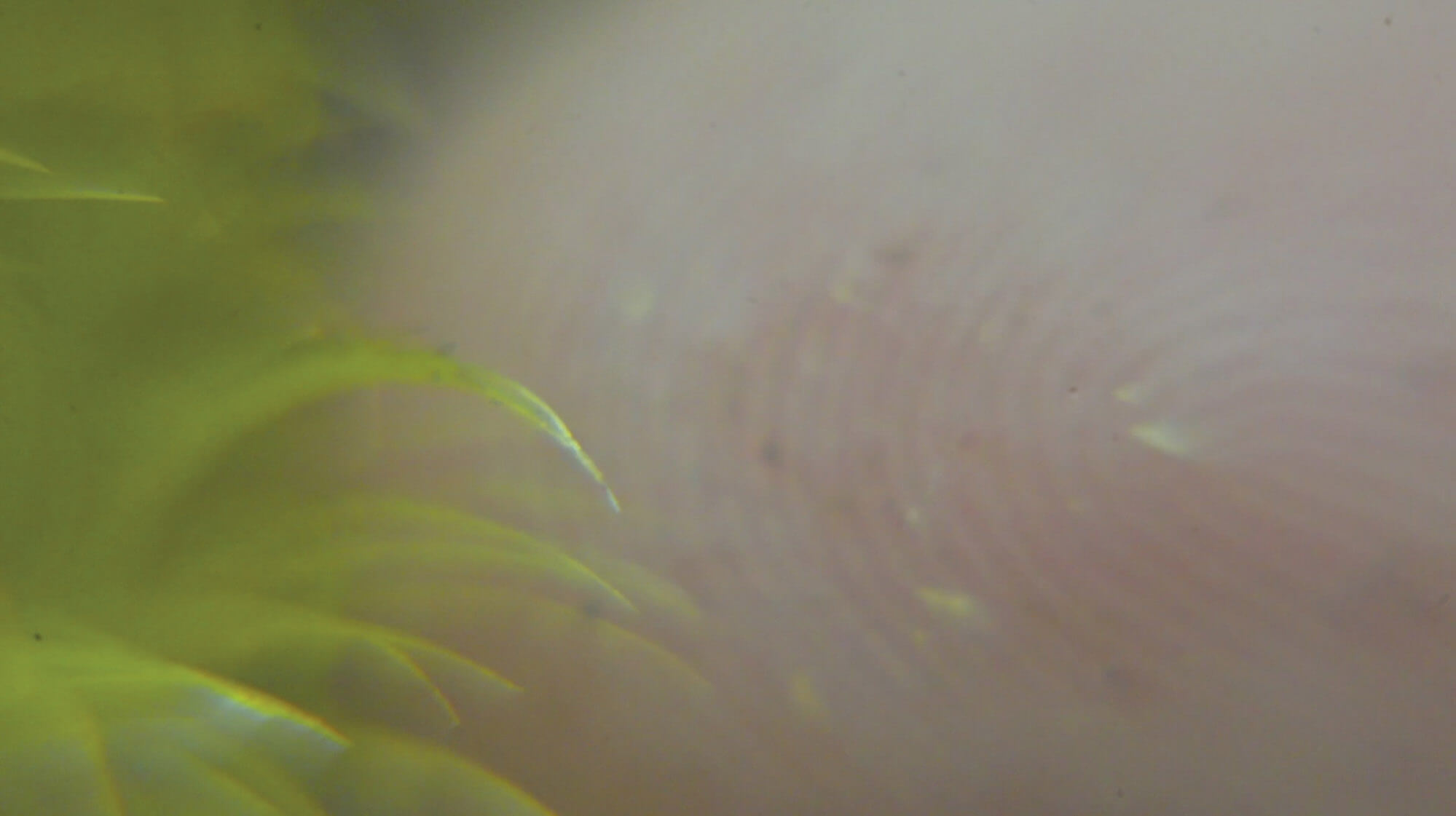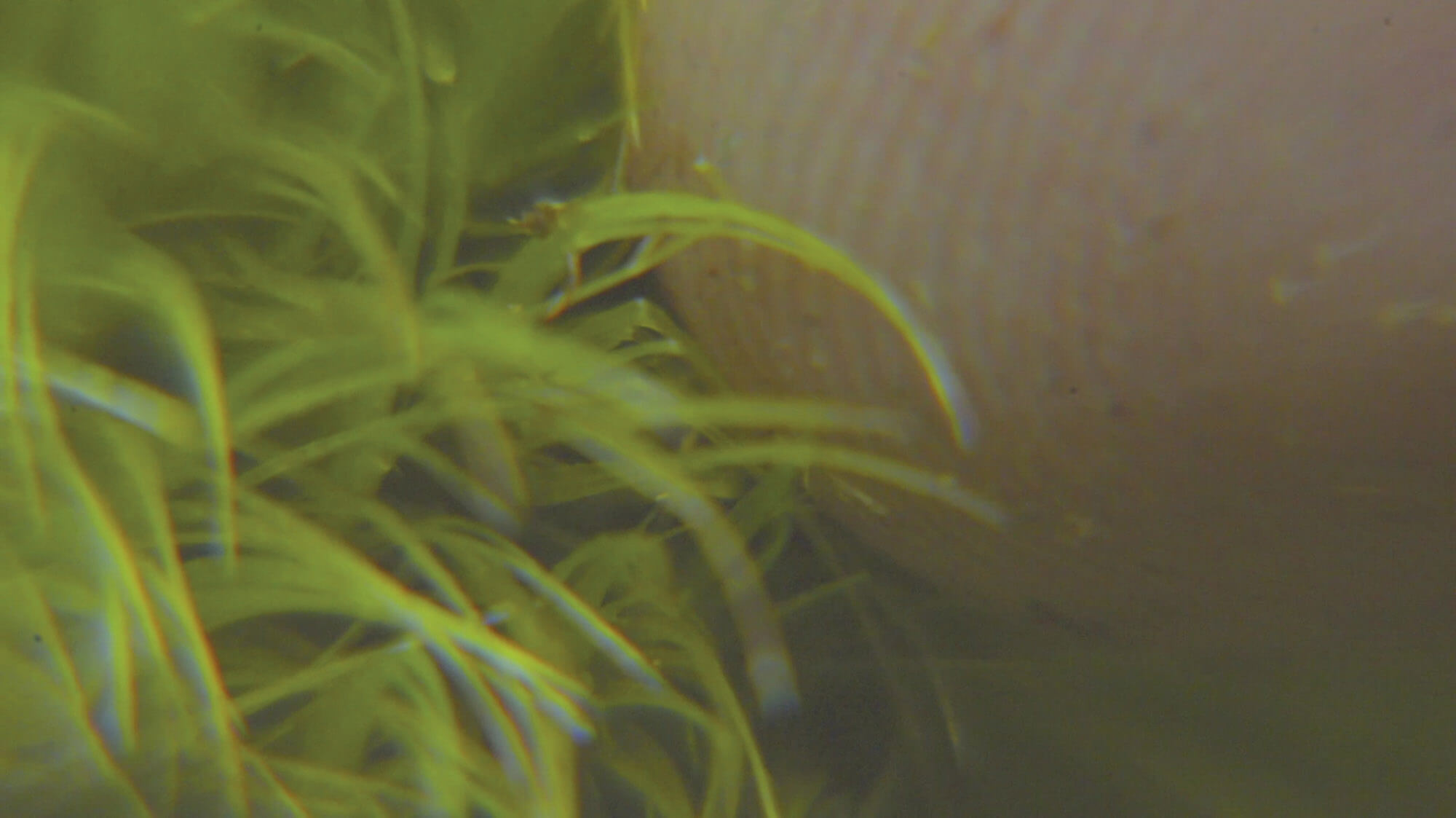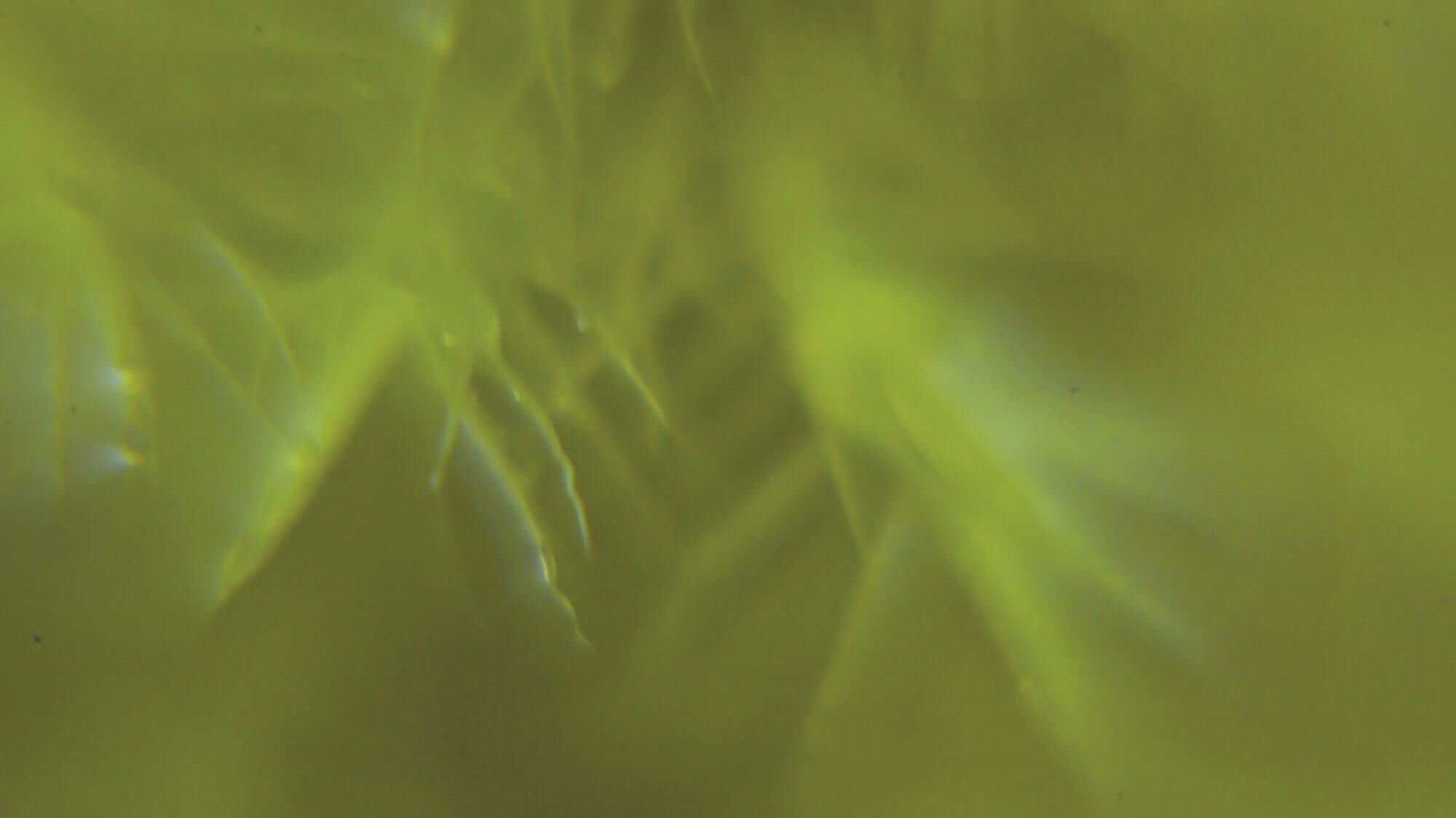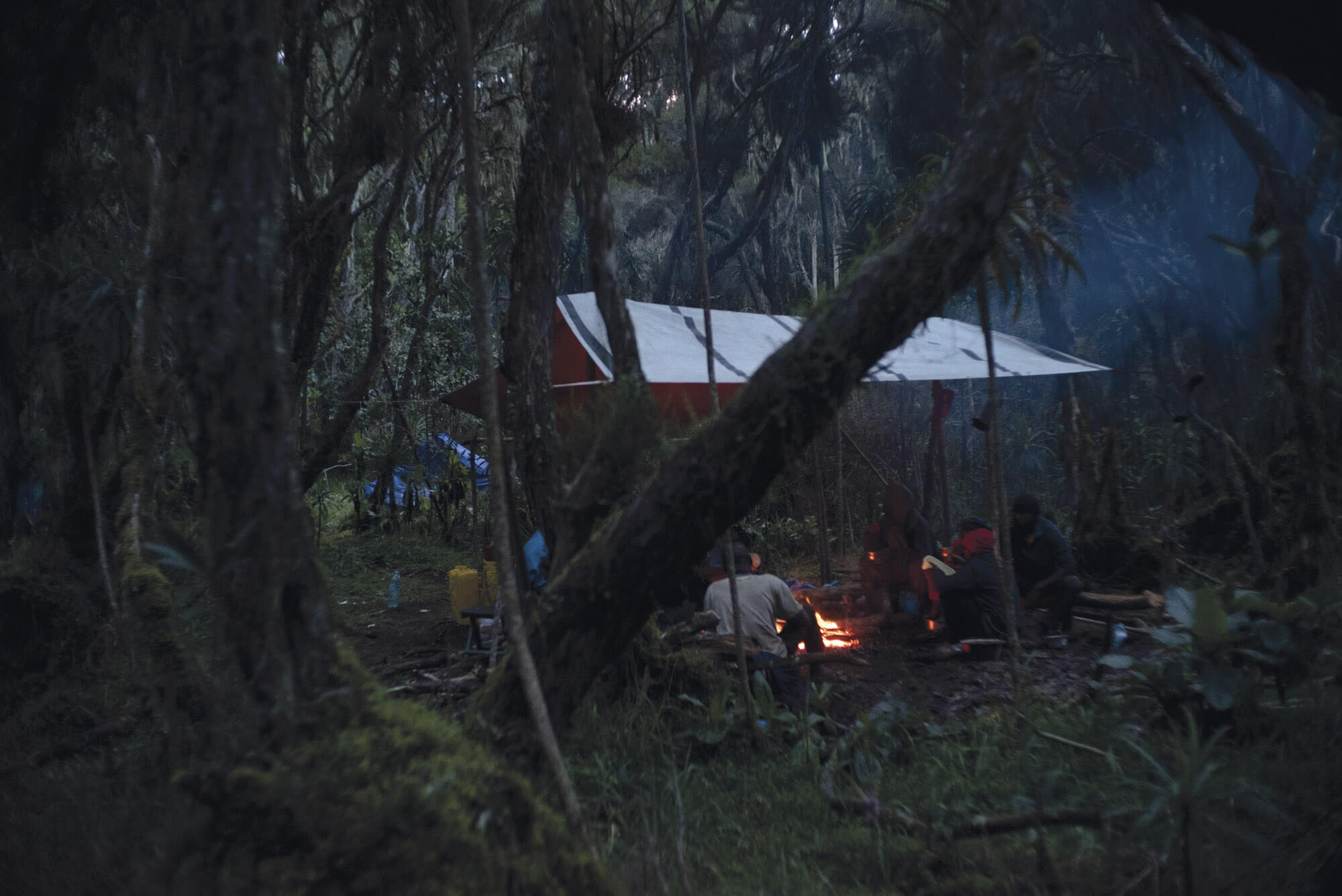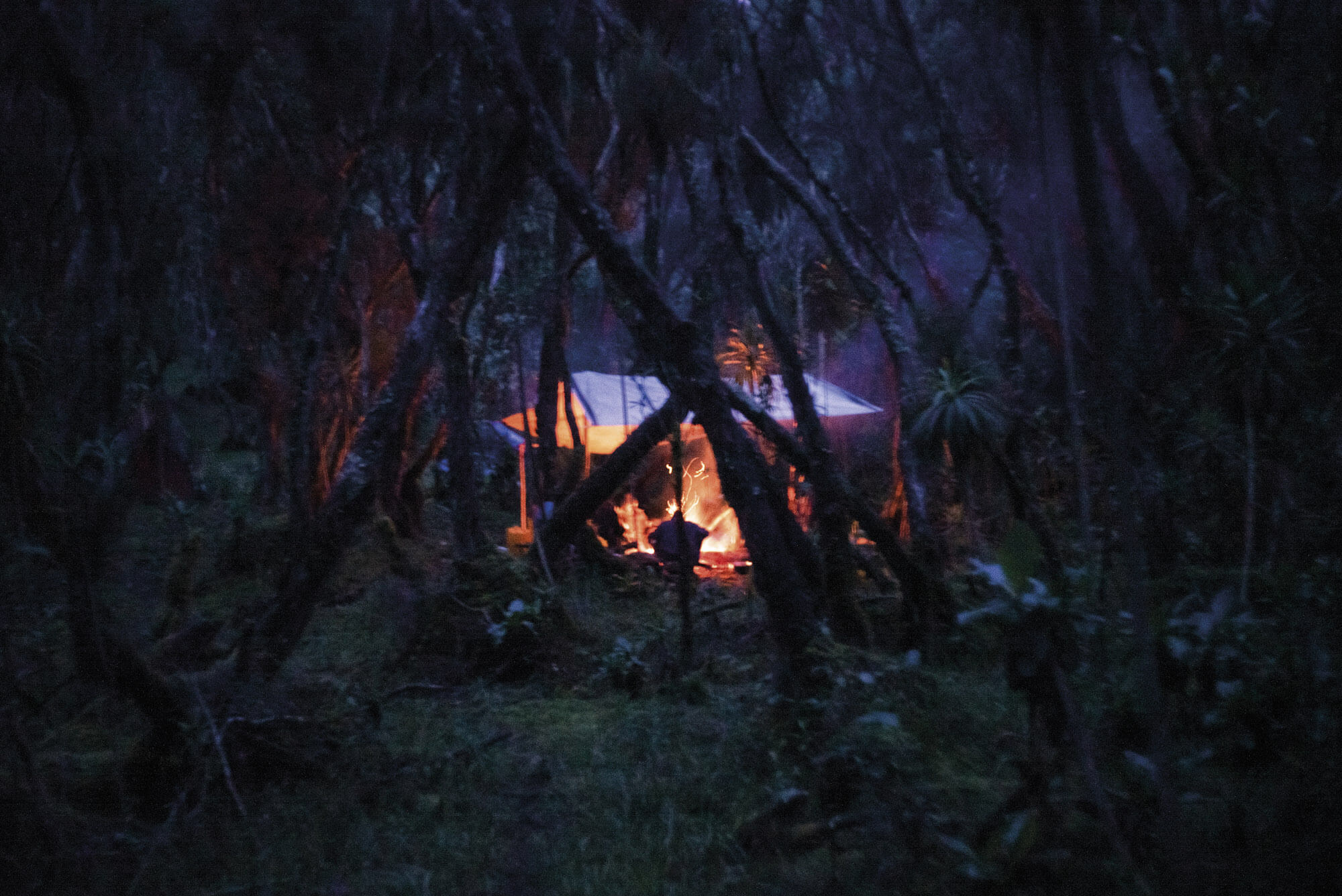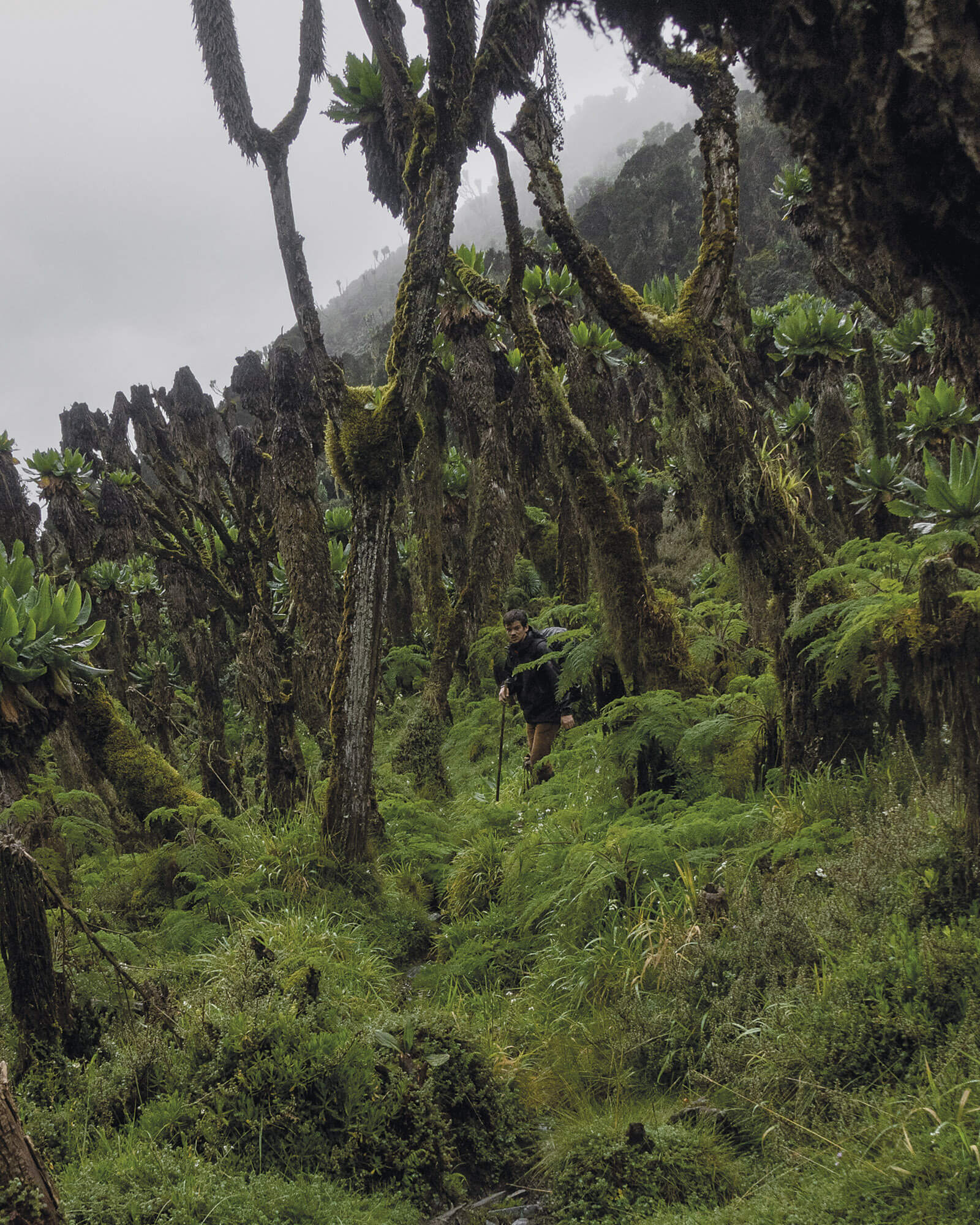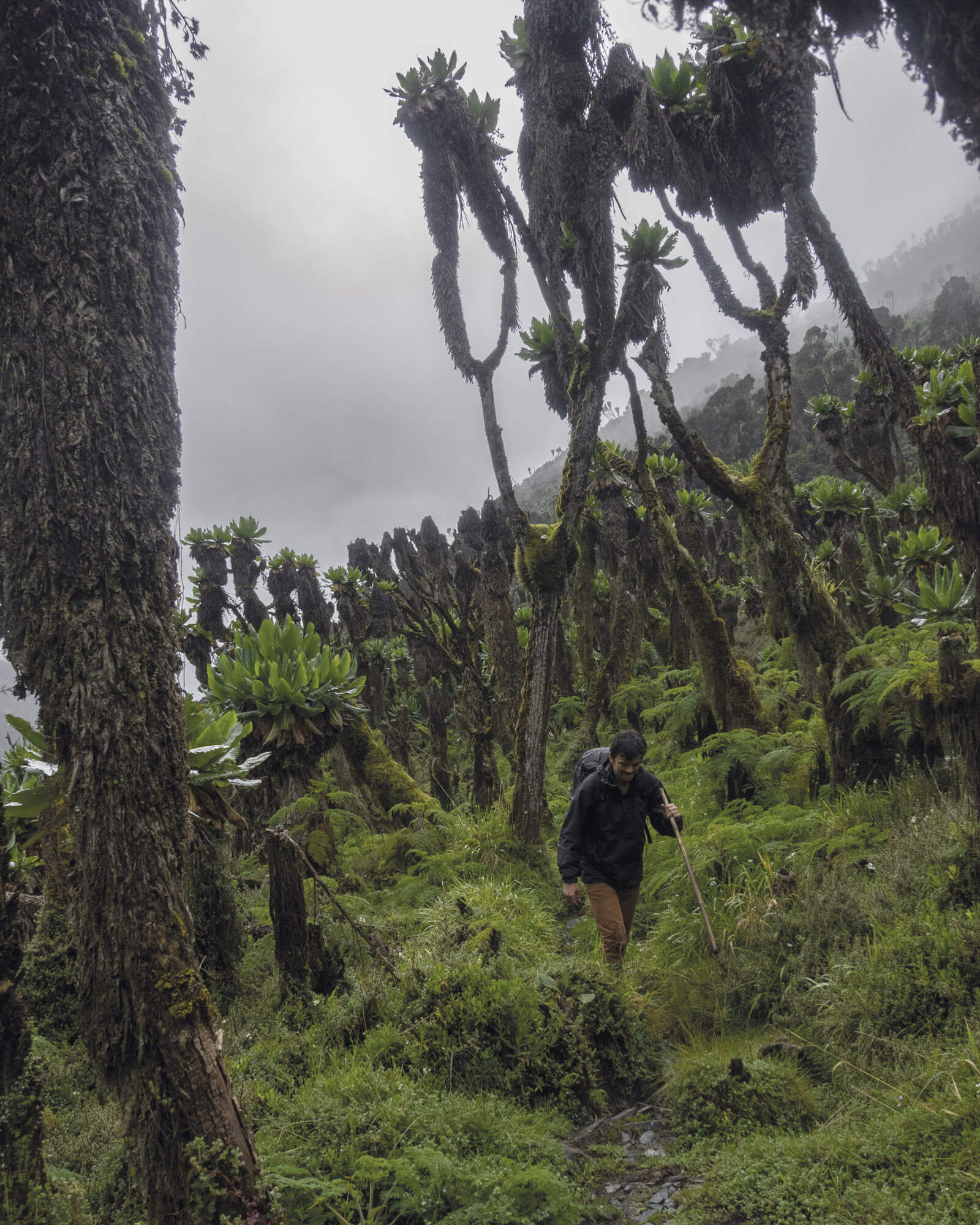Section 4
Zheng BoBio
Born in Beijing and based in Hong Kong, Zheng Bo is an eco-queer artist of Bai ethnicity. Through
video, drawing, performance, sculpture, dance and film, Zheng Bo explores and cultivates new
forms of relationships with the vegetal world. Characterised by a strong ecological vocation,
their works aim to interfere with anthropocentric thinking, deconstructing it through visions
and experiences that place centre-stage a multi-species awawareness and new ways of relating
with the living and non-living world.
Down the years, the artist has focused on studying plants, following the teachings of experts in
biology and botanics and creating daily artistic rituals focused on interspecies care.
The work Mountain Massage, originally conceived for their recent solo show at the Göteborgs
Konsthall, was conceived as a spa inside which the public could experience a moment of
well-being in direct contact with a series of elements from the mountains of Trentino.
Lying with eyes closed on a small bed, visitors who accept the invitation to take part in this
therapy are invited to put on, touch and interact with elements such as stones, bark and moss.
In proposing an activity that differs little from what is eperinced when walking in the
mountains, Zheng Bo emphasises the need to discover a resonant, attentive and aware form of life
in which being-in-relation is a vibrant experience of reactivation and regeneration, at the same
time a source and practice for healing from and care for the world.
Natural Surfaces and Anti-Stress Effects
Several studies indicate that touching the wood or leaves of a tree can indirectly
stimulate the parasympathetic nervous system and produce a vagotonic action, with a
measurable anti-stress impact.
Although scientific research in this sphere is limited, the works found in literature
concur in detecting several benefits in response to the tactile stimuli procured by
wood, especially in comparison with artificial materials.1-2
A pioneering study on the effects of tactile stimulation on human physiology showed
significant variations in blood pressure and heart rate after contact with steel and
other materials (variations not detected with wood).3 A
subsequent study confirmed wood’s neutral effect compared to artificial materials, even
when the surfaces to be touched were warmed up: contact with aluminium or plastic
increased blood pressure, although this increase was inhibited if the materials were
warmed up; however, blood pressure did not change in response to contact with wooden
objects, even without being warmed up.4
More recently, it was demonstrated that touching the wood of certain arboreal species
(e.g. Japanese cypress) with the palm of the hand or the sole of the foot prompts
effects on brain activity (detected via the concentration of oxyhaemoglobin in the
pre-frontal cortex) and on autonomic nervous system activity (measured via heart rate
variability or HRV), contrary to what occurs when touching marble.5
In studies exploring the effects of the presence of wooden objects in controlled
environments, the stimuli produced by tactile and olfactory components combine and so it
is hard to isolate the contribution made by a single stimulus. The presence of wood
(accessible to touch, such as wooden panels, furnishings etc.) usually incurs a
concurrent olfactory stimulation produced by the volatile organic compounds released by
the wood into the air.6
Studies conducted in controlled environments can easily be transferred to forest
environments: touching the wood of trees with the hands and potentially the chance to
step on ground covered with leaves and roots with bare feet can be considered functional
in relation to the health benefits produced by immersion in a forest.
— Francesco Meneguzzo, Federica Zabini
Institute of BioEconomy, CNR - Sesto Fiorentino (FI) CAI Central Scientific Committee
- S. R. Bhatta, K. Tiippana, K. Vahtikari, M. Hughes, M. Kyttä, “Sensory and emotional perception of wooden surfaces through fingertip touch”, Frontiers in Psychology, 8, 2017. LINK→
- H. Ikei, C. Song, Y. Miyazaki, “Physiological effects of touching coated wood”, International Journal of Environmental Research and Public Health, 14(7), 2017. LINK→
- T. Morikawa, Y. Miyazaki, S. Kobayashi, “Time-series variations of blood pressure due to contact with wood”, J Wood Sci, 44, 1998, pp. 495–497.
- S. Sakuragawa, T. Kaneko, Y. Miyazaki, “Effects of contact with wood on blood pressure and subjective evaluation”, J Wood Sci, 54, 2008, 107–113. LINK→
- H. Ikei, C. Song, Y. Miyazaki, “Physiological effects of touching wood”, International Journal of Environmental Research and Public Health, 14(7), 2017, 801. LINK→
- H. Ikei, C. Song, Y. Miyazaki, “Physiological effects of touching hinoki cypress (Chamaecyparis obtusa)”. Journal of Wood Science, 64(3), 2018, pp. 226–236. LINK→
Vera PortatadinoBio
Vera Portatadino’s research has always been strongly influenced by an intimate relationship with
nature. Her works are the pictorial transcription of physical and emotional experiences felt
during walks in woods, meadows or mountains, as well as the result of a personal interest in
natural sciences and observing nature under a microscope.
Born and brought up in a house surrounded by lakes, woods and the foothills of the Alps, she is
especially interested in exploring reality as a changeable dimension, in which the human and the
other than human are in constant dialogue and becoming. Immersed in a feverish biological tangle
of existence and open to an attentive exploration of everything around her, such as insects,
plants, birds and animals, Vera Portatadino intimately and physically develops what the German
sociologist Hartmut Rosa would call an “experience of resonance”: a form of specific relation in
which the subject and the world in this case mountain, urged to communicate through their own
“voice”, “touch” each other, and, stimulated to vibrate, are reciprocally transformed.
The figurative references that appear on her canvases sometimes refer to real elements (botanic
species or animals of places lived in), at others to symbolic presences (vegetal varieties
becoming extinct due to global warming that led her to raise ecological issues), and at others
to historical references (some details recall the History of Art, especially Italian). All these
elements, relocated into the complexity of the present, are the aesthetic and conceptual
manifestation of a need for care, understood at the same time as a multi-directional necessity
and possibility.
Vera Portatadino
Anima Alzati Apriti,
2019
Oil and acrylic on canvas
Mart – Museo di arte moderna e contemporanea di Trento e Rovereto
Donazione Cavalleri
Nature Deficit
More than half the global population lives in urban areas where exposure to nature is
usually very limited, and often distributed unequally according to socio-economic
status.1, 2
As well as the physical separation between urban zones and the “natural” world, in
high-income countries 80-90% of time is spent indoors, carrying out sedentary activities
and passing 6-8 hours or more every day in front of phone or other digital screens.3
In a very short time we have passed from a mainly outdoors existence with constant
exposure to nature to a “constructed” space and a life lived mainly indoors.
In recent years, a number of doctors and scientists have begun to talk about a “nature
deficit” and are exploring in greater detail the negative effects resulting from this
deficit and, conversely, effects on human health associated with exposure to nature.
In general, an increasing amount of wide-ranging scientific evidence is demonstrating a
relationship between little exposure to nature and an increase in depression, anxiety
and other “contemporary” disorders, especially non-transmittable ones such as
cardiovascular or metabolic syndromes and so on.4, 5
In addition, it is also showing that exposure to nature is, indeed, associated with
significant, measurable benefits for a huge range of psycho-physiological aspects.6, 7
Another field of study is focusing in particular on the effects of nature deficit on
children and adolescents. It is becoming increasingly evident that contact with green
spaces during the phases of growth is important not only for health but also for
cognitive functioning, social behaviour and the capacity to develop positive, empathic
emotions, as well as being associated with a reduced risk of psychiatric disorders in
adolescence and adulthood.8
— Francesco Meneguzzo, Federica Zabini
Institute of BioEconomy, CNR - Sesto Fiorentino (FI) CAI Central Scientific Committee
- M. Buckland, D. Pojani, “Green space accessibility in Europe: a comparative study of five major cities”, European Planning Studies, 31(1), 2023, pp. 146–167. LINK→
- M. Ferguson, H. E. Roberts, R. R. C. McEachan, M. Dallimer, “Contrasting distributions of urban green infrastructure across social and ethnoracial groups”, Landscape and Urban Planning, 175, 2018, pp. 136-148. LINK→
- M.H.E.M. Browning, J.R. Hanley, C.R. Bailey, et al., “Quantifying Nature: Introducing NatureScoreTM and NatureDoseTM as Health Analysis and Promotion Tools”, American Journal of Health Promotion, 38(1), 2024, pp. 126-134. LINK→
- M. Van den Bosch, W., Bird, Oxford Textbook of Nature and Public Health: The role of nature in improving the health of a population. Oxford University Press, 2018.
- X. Dong, L. Geng, “Nature deficit and mental health among adolescents: A perspectives of conservation of resources theory”, Journal of Environmental Psychology, 87, 2023. LINK→
- G. N. Bratman, C. B. Anderson, M. G. Berman, B. Cochran, S. de Vries, J. Flanders, C. Folke, H. Frumkin, J. J. Gross, T. Hartig, P. H. Kahn, M. Kuo, J. J. Lawler, P. S. Levin, T. Lindahl, A. Meyer-Lindenberg, R. Mitchell, Z. Ouyang, J. Roe, G. C. Daily, “Nature and mental health: An ecosystem service perspective”, Science Advances, 5 (7), 2019. LINK→
- L. Andersen, S. S. Corazon, U. K. Stigsdotter, “Nature Exposure and Its Effects on Immune System Functioning: A Systematic Review”, International Journal of Environmental Research and Public Health, 18, 2021, 1416. LINK→
- G. Barbiero, R. Berto, A. Venturella, N. Maculan, “Bracing Biophilia: When biophilic design promotes pupil’s attentional performance, perceived restorativeness and affiliation with Nature”, Environment, Development and Sustainability, 2021, pp. 1–15. LINK→
- K. Engemann, C. B. Pedersen, L. Arge, C. Tsirogiannis, P. B. Mortensen, J. C. Svenning, “Residential green space in childhood is associated with lower risk of psychiatric disorders from adolescence into adulthood”, Proceedings of the National Academy of Sciences of the United States of America, 116(11), 2019, pp. 5188–5193. LINK→
Ruben BrulatBio
Ruben Brulat’s works are nearly always born out of a travel experience and a journey undertaken
by the artist to reach some of the remotest parts of the world. Nature is where and how Brulat
pursues his personal need to understand where and why we exist.
His pictures depicting his camouflaged naked body in the mountains, forests, deserts, volcanos
and glaciers are famous – unpolluted environments where the fusion between human being and
natural elements is manifested via actions of a performative nature. The attempt to connect with
the earth, feel its substance and become one with nature evoke sentiments of both strength and
fragility.
In the video Doigt, voir dans le vert des jungles, filmed in the forests of the
Ruwenzori
mountain range in Africa, the camera focuses on the moment when the artist’s finger enters into
contact with the vegetation. The act has an alchemic feel of the encounter between human body
and the primary forces of nature.
Ruben Brulat
Doigt, voir dans le vert des jungles,
2018
HD video, sound, 4’28’’
Courtesy the artist and Ncontemporary, Milan-London-Venice
Forests for Climate Stability
Services rendered by trees to our planet range from carbon sequestration to the
production of oxygen, to the conservation of the ground and the regulation of the water
cycle. Trees support both natural and human food systems and provide shelter for
numberless species, humankind included, via construction materials.
While all forest ecosystems are important, tropical forests are essential for the
planet’s equilibrium and for the very survival of the human species.
Apart from the loss of an important player in atmospheric carbon sequestration,
deforestation and forest degradation in the great tropical forests cause serious
environmental impact, also thanks to their effects on climate regulation.1
Since 1990, primary forest surface – now present only in tropical and boreal zones – has
diminished by more than 80 million hectares and more than a third of the forest surface
has been lost compared to the time before the development of human civilisation.2
Carbon sequestration is the first and most evident
service offered by our global forests. But they also play an even more important role in
climate stability, thanks to their releasing large quantities of water vapour into the
atmosphere that, by diminishing air pressure in the lower atmosphere, facilitates the
flow of moist air from the oceans. Known as the “biotic pump” and postulated first by
two Russian physicists, this mechanism is capable of transporting water vapour over huge
distances far from the oceans, thus guaranteeing rainfall in many inland areas.3 In South America, the River Plate basin depends on
evaporation from the Amazon rainforest for 70% of its water resources, and western
China, which has the largest expanses of cereal crops, depends for over 80% of its
waters resources on humidity recycled from the Euro-Asiatic forests (from Scandinavia to
east Russia).4
This capacity for climate regulation is guaranteed above all by the great natural or
unmanaged forests that are not disturbed by human actions. To safeguard them should be
an absolute top priority within the context of the progressive changes of the global
climate.
— Francesco Meneguzzo, Federica Zabini
Institute of BioEconomy, CNR - Sesto Fiorentino (FI) CAI Central Scientific Committee
- E. Gies, “More than carbon sticks”, Nature Water, 1(10), 2023, pp. 820–823. LINK→
- M. Bologna, G. Aquino, “Deforestation and world population sustainability: a quantitative analysis”, Scientific Reports, 10(1), 2020, 7631. LINK→
- A. M. Makarieva, A. V. Nefiodov, A. D. Nobre, M. Baudena, U. Bardi, D. Sheil, S. R. Saleska, R. D. Molina, A. Rammig, “The role of ecosystem transpiration in creating alternate moisture regimes by influencing atmospheric moisture convergence”, Global Change Biology, 29(9), 2023, 2536–2556. LINK→
- R. J. Van Der Ent, H. H. G. Savenije, B. Schaefli, S. C. Steele-Dunne, “Origin and fate of atmospheric moisture over continents”. Water Resources Research, 46(9), 2010.LINK→
